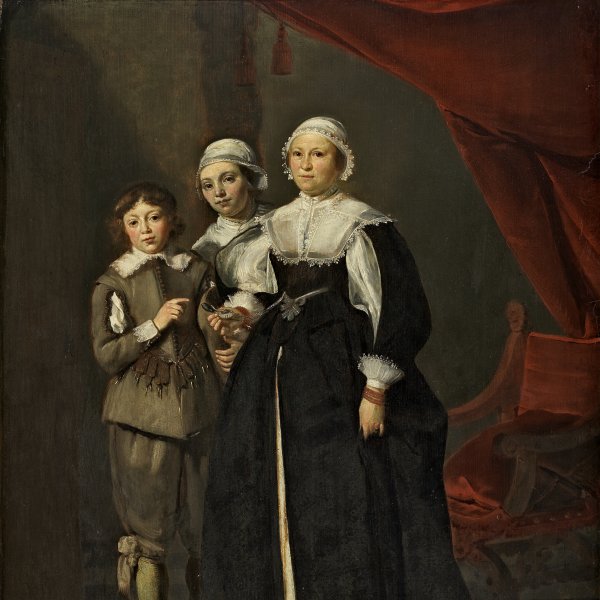Thomas Hendricksz. de Keyser
Amsterdam, 1596/97-1667
De Keyser was a Dutch painter born in Amsterdam in 1596 or 1597 into a family of leading artists. He trained with his father, the architect and sculptor Hendrick de Keyser while his brothers Pieter and Willem also trained with their father and became architects and sculptors. Thomas Hendricksz. De Keyser is considered the most important portrait painter in Amsterdam prior to the arrival of Rembrandt and he lived and worked in the city throughout his career. De Keyser’s first works reveal the influence of Cornelis Ketel, an artist of the previous generation, as well as that of contemporaries such as Cornelis van der Voort and Nicolas Eliasz. In the 1620s De Keyser introduced a new format in which his sitters, depicted full-length and on a small scale, are located in interiors, thus combining the traditional court portrait format with the depiction of everyday objects.
In 1632 the artist painted the most important portrait of his career, The Company of Captain Allaert Cloeck and Lieutenant Jacobsz. Rotgans (Rijksmuseum, Amsterdam), for the Kloveniersdoelen in Middelburg, a commission that he probably secured through his brother Pieter de Keyser, who was the architect of the new enlargement of the building. Over the following years De Keyser executed a series of family portraits, which were highly innovative for their use of a secular setting.
Between 1640 and 1652 the artist abandoned his activities as a painter and devoted his time to dealing in basalt in association with his brother Pieter. At this period he registered in the stonemasons’ guild in Amsterdam. In 1652 he again returned to painting and specialised in small-format equestrian works. De Keyser’s last known work, Equestrian portrait of two Men (Gemäldegalerie Alte Meister, Dresden), dates from 1661. From the following year until his death in 1667, De Keyser is documented as official architect to the city of Amsterdam, undertaking major projects and supervising the work on the city’s new Town Hall.
In 1632 the artist painted the most important portrait of his career, The Company of Captain Allaert Cloeck and Lieutenant Jacobsz. Rotgans (Rijksmuseum, Amsterdam), for the Kloveniersdoelen in Middelburg, a commission that he probably secured through his brother Pieter de Keyser, who was the architect of the new enlargement of the building. Over the following years De Keyser executed a series of family portraits, which were highly innovative for their use of a secular setting.
Between 1640 and 1652 the artist abandoned his activities as a painter and devoted his time to dealing in basalt in association with his brother Pieter. At this period he registered in the stonemasons’ guild in Amsterdam. In 1652 he again returned to painting and specialised in small-format equestrian works. De Keyser’s last known work, Equestrian portrait of two Men (Gemäldegalerie Alte Meister, Dresden), dates from 1661. From the following year until his death in 1667, De Keyser is documented as official architect to the city of Amsterdam, undertaking major projects and supervising the work on the city’s new Town Hall.





